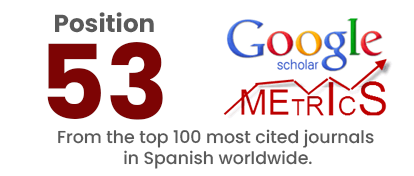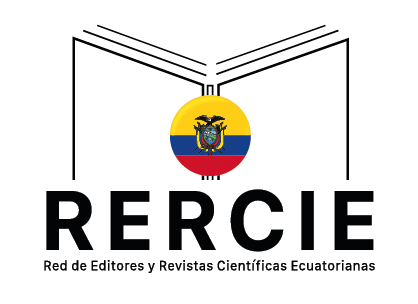Automatización de la Justicia: ¿Puede un Algoritmo Reemplazar a un Juez?
DOI:
https://doi.org/10.36097/rsan.v1i60.3222Keywords:
Artificial intelligence, digital governance, ICT, judges, justice administrationAbstract
The use of Information and Communication Technologies (TIC), and algorithms, are imposed today in terms of digital governance, which is why this article addresses this problem, focusing on terms of administration of justice, with the aim of analyzing the implications ethical and legal reasons for an algorithm to replace a judge in making judicial decisions. The research was developed under a qualitative approach, with support in data collection that consisted of a literature review or state of the art, and comparative legal analysis. The results indicate the risk of violating fundamental procedural rights and principles such as effective judicial protection, due process and the principle of equality when AI is used in the judiciary. In this way, conclusions were obtained that, despite the benefits of the implementation of algorithms in judicial processes, these should be taken as streamlining tools and not as a direct replacement, this due to the rationality required by the role of the judge in the administration of justice and the humanization that axiologically characterizes it and that under no circumstances should be distorted.
Downloads
References
Abdala, M. B., Lacroix Eussler, S., & Soubie, S. (2019). La política de la Inteligencia Artificial: sus usos en el sector público y sus implicancias regulatorias. CIPPEC. https://www.cippec.org/wp-content/uploads/2019/10/185-DT-Abdala-Lacroix-y-Soubie-La-pol%C3%ADtica-de-la-Inteligencia-Artifici....pdf
Abel Souto, M. (2024). Análisis de la incidencia en el mundo digital de la COVID-19 y blanqueo de dinero. En M. A. Souto, J. M. Lorenzo Salgado & N. Sánchez Stewart (Coords.), IX Congreso internacional sobre prevención y represión del blanqueo de dinero (pp. 273-322). Tirant lo Blanch. http://criminet.ugr.es/recpc/24/recpc24-28.pdf
Agudelo Ramírez, M. (2005). El debido proceso. Opinión jurídica, 89-105. https://dialnet.unirioja.es/servlet/articulo?codigo=5238000
Aletras, N., Tsarapatsanis, D., Preotiuc-Pietro, D., & Lampos, V. (2016). Predicting judicial decisions of the European Court of Human Rights: a Natural Language Processing perspective. PeerJ Computer Science. 2., e93. https://doi.org/10.7717/peerj-cs.93
Aragón, C. S., & Luna, V. S. (2019). Tics y efectividad en la gobernanza para el desarrollo sostenible. Erg@omnes, 11(1), 123-145. https://doi.org/10.22519/22157379.1424
Aspis, A. (2010). Las TICs y el Rol de la Justicia en Latinoamérica. Derecho & Sociedad, (35), 327-340. https://revistas.pucp.edu.pe/index.php/derechoysociedad/article/view/13311
Basco, A. I., Beliz, G., Coatz, D., & Garnero, P. (2018). Industria 4.0: fabricando el futuro (Vol. 647). Ciudad de Buenos Aires: Inter-American Development Bank. http://dx.doi.org/10.18235/0001229
Cancio Fernández, R. C. (2020). ¿Sueñan los jueces con sentencias electrónicas? Revista Análisis Jurídico-Político, 2(3), 145-168. https://doi.org/10.22490/26655489.3854
Cevallos Sánchez, G., & Alvarado Moncada, Z. (2018). Tutela judicial efectiva y la relación con el principio de inmediación. Revista Universidad y Sociedad, 10(1), 168-173. http://scielo.sld.cu/pdf/rus/v10n1/2218-3620-rus-10-01-168.pdf
Corvalán, J. G. (2019). El impacto de la inteligencia artificial en el trabajo. Revista de Direito Econômico e Socioambiental, 10(1), 35-51. https://dialnet.unirioja.es/servlet/articulo?codigo=7210980
Estévez, E. C., Linares, S., & Fillottrani, P. (2020). Prometea: Transformando la administración de justicia con herramientas de inteligencia artificial. Banco Interamericano de Desarrollo. http://dx.doi.org/10.18235/0002378
García, A. G. (2023). Entendiendo ChatGPT. Technology Inside by CPIC, 7, 8-10. https://cpic-sistemas.or.cr/revista/index.php/technology-inside/article/view/75/79
Muñoa Vidal, T. (2024). Blanqueo de dinero y mundo digital. En M. A. Souto, J. M. Lorenzo Salgado, & N. Sánchez Stewart (Coords.), IX Congreso internacional sobre prevención y represión del blanqueo de dinero (pp. 553-555). Tirant lo Blanch. https://www.dykinson.com/libros/ix-congreso-sobre-prevencion-y-represion-del-blanqueo-de-dinero/9788411979948/
Muñoz Conde, F. (1999). Teoría General del Delito. Editorial Temis S. A.
Oficina de Información Científica y Tecnológica para el Congreso de la Unión (2018). Inteligencia artificial. Foro consultivo Número 012, 1-6. https://www.foroconsultivo.org.mx/INCyTU/documentos/Completa/INCYTU_18-012.pdf
Organización para la Cooperación y el Desarrollo Económico [OECD]. (2019). Noticias. Cuarenta y dos países adoptan los Principios de la OCDE sobre Inteligencia Artificial. https://www.oecd.org/espanol/noticias/cuarentaydospaisesadoptanlosprincipio sdelaocdesobreinteligenciaartificial.htm
Quijan, J. N., & Fenolljairo, J. N. (2010). La humanización de la justicia. Academia & Derecho, (1), 33-40. https://revistas.unilibre.edu.co/index.php/academia/article/view/2365
Rodríguez Alegre, L., & López Padilla, R. d. (2023). Gobierno digital, modernización del estado y servicio al ciudadano: Consideraciones en una estrategia de gobierno digital en Perú. Revista Internacional de Cultura Visual, 2-8. https://doi.org/10.37467/revvisual.v10.4567
Segado, F. F. (1992). La dimensión axiológica del Derecho constitucional. Cuadernos Constitucionales de la Cátedra Fadrique Furió Ceriol, (1), 15-39. https://dialnet.unirioja.es/servlet/articulo?codigo=2539458
Segura, R. (2023). Inteligencia artificial y administración de justicia: desafíos derivados del contexto latinoamericano. Revista de Bioética y Derecho, 45-72. https://doi.org/10.1344/rbd2023.58.40601
Temesio Vizoso, S. G. (2022). Reflexiones sobre la inteligencia artificial y la bibliotecología. Palabra Clave (La Plata), 11(2), e159. https://doi.org/10.24215/18539912e159
Valente, L. A. (2019). La persona electrónica. Anales, Revista Científica de la Facultad de Ciencias Jurídicas y Sociales de la Universidad Nacional de la Plata, (49), 1-30. https://doi.org/10.24215/25916386e001
Wilson, A. (2018). El ascenso de la automatización: la tecnología y los robots reemplazarán a los humanos. Antioch, Tn.: Editorial Babelcube Inc.
Zagrebelsky, G. (2009). El Derecho dúctil. Ley, derechos, justicia (9na. Ed.). Editorial Trotta.
Zou, C. (2022). Achievements and prospects of Artificial Intelligence Judicature in China. Chinese Studies, 11(4), 197-227. https://doi.org/10.4236/chnstd.2022.114016
Downloads
Published
How to Cite
Issue
Section
License
Copyright (c) 2024 Juan Carlos Valladolid Mera, Tania Muñoa Vidal, Yolange Dioclesiana Véliz Valencia

This work is licensed under a Creative Commons Attribution-NonCommercial-NoDerivatives 4.0 International License.


















